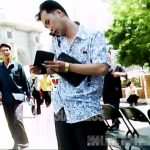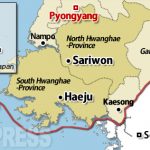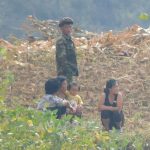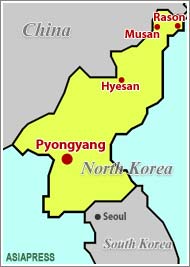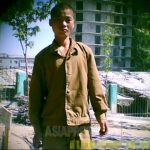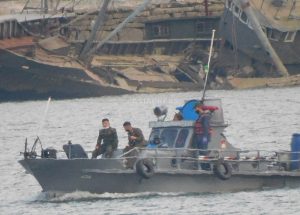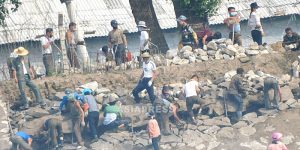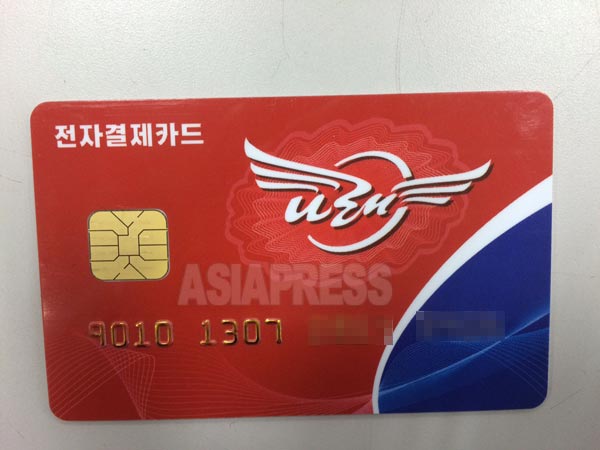
North Korea, which last December (2023) suddenly raised the labor wage more than 10 times from before, is expanding the payment of labor wages through cash cards. In addition, the government is encouraging the use of cards at food stores, such as state-run grain stores and other state-run stores. While bank-issued cash cards have reportedly existed in North Korea for some time, the authorities are now pushing hard for people to use them.
ASIAPRESS reporting partners were asked about the government's intentions, how people are reacting, and whether the cards actually work in North Korea, where electricity is scarce. In this two-part report, three reporting partners living in the northern part of the country provide information on the reality of card use there. (JEON Sung-jun / KANG Ji-won)
◆Despite some distrust, every family uses at least one card
"Some people don't feel comfortable using [the cards] because they don't trust the government yet, but everyone has one or two."
A, a resident of Hyesan, Ryanggang Province, said in late June that the number of card users in his neighborhood was increasing. Another interviewee, B, also in Ryanggang Province, told a similar story.
"There are many people in the city who use them. They often take their old money to the bank and put it on a card because North Korean money wears out so quickly. In Hamhung, Chongjin and Pyongyang, I've heard that more people use cards."
C from North Hamgyong Province also said, "Now that noim (wages) are paid by card, people are making passbooks and cards through banks because it is convenient, so there is one for every household."
◆Government actively encourages card use
Cards first appeared in North Korea in the 1990s. However, they were only for foreign currency and were only accepted in a few places in Pyongyang and the provinces, and were targeted at foreigners. In 2010, the Foreign Trade Bank of the Democratic People's Republic of Korea introduced the more universally accepted "Narae" card, followed by "Koryo" (2011, Koryo Bank), "Jeongseong" (2015, Central Bank of Korea), with more than 20 different cards reportedly in use as of 2018.
However, the cards have had limited use among the general population due to limitations such as the lack of payment infrastructure and issues with the power supply and reliability of the payment system.
Since the enactment of the Electronic Payment Law in October 2021, North Korean authorities have taken various measures, sometimes through coercion and sometimes through appeasement, to encourage people to use the cards.
◆People receive wages and buy food with cards
The North Korean government's policy of encouraging and incentivizing card use appears to be working to increase the number of users.
"We use the card a lot at state-owned video stores and jangmadang (markets). Even old money that is damaged by more than 30% (which is not accepted in the market) can be taken to the bank and they accept it for 5%, so people like to use the card." (Reporting Partner C)
B also noted that the number of places where cards are used is increasing, and the convenience of sending money is one of the advantages of using cards.
"Most government stores, telecommunication service centers, and shops accept cards. Sometimes you can't use them because of power outages, but you don't have to carry money, and it's especially convenient to transfer money. The fee is 1.5%, which is fine for transfers up to about 2 million won, but I was told that if you want to send more than that, you have to disclose the purpose of the transaction."
A said, "Wages at the Hyesan Steel Factory (in June) were also paid by card, so workers registered and took their personal cards to receive their salary. People take the card to a grain government-run grain stores to buy food."
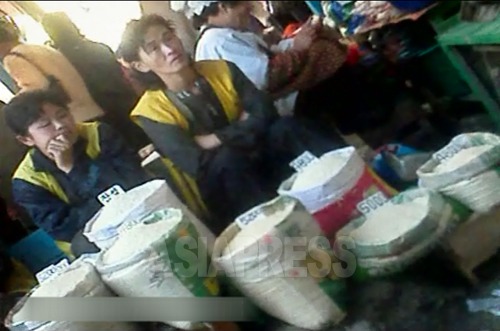
◆Despite limitations, the cards' future seems bright
Still, the cards appear to be limited in their practical use.
"If the power goes out when you pay, you have to come back, so you have to take your card and cash with you. That's why some food distribution centers have set times when they sell food when the power is not out."
A is also optimistic about the potential for improvement: "At first, we often couldn't pay because of payment errors, but now it's getting better."
On the other hand, some people try to avoid using cards whenever possible. In the next installment, ASIAPRESS will take a look at the reasons for this, the specific ways in which cards are used in the real world, and analyze what the future holds. (To 2 >>>)
※ ASIAPRESS communicates with its reporting partners through Chinese cell phones smuggled into North Korea.
- <Interview from Inside N. Korea>The state of North Korea's smuggling activities, which has expanded dramatically and includes many UN sanctioned items
- <Inside N. Korea>State-led smuggling resumes in the Yalu River, sends seafood and copper ore to China, bringing in UN-sanctioned goods like cars and machinery
- <Inside N. Korea> Crackdown on primitive slash-and-burn farmers who hide in the mountains shows Kim Jong-un’s uncompromising efforts to control his population
- <Inside N. Korea> Implementation of the large-scale restructuring of trading companies (1) Called “anti-socialist hotbeds,” government forces ‘bases’ of trading companies to close down and consolidate
- <Inside N. Korea> Wigs, fake eyelashes emerge as a driver of exports abroad, but laborers work in very poor conditions
